Don’t know how to get started with AI? Use the AI Discovery Diamond Framework to generate AI Projects ideas.
The potential of Artificial Intelligence (AI) is enormous. 80% of US CEOs believe that AI will significantly change the way they do business in the next five years, says the 2019 PwC US CEO survey. Yet AI is not only the future, but it is also the present. According to the 2019 Fortune survey, 60% of Fortune 500 companies already employ AI to improve processes. While the outlook for the global economy might be grim, CEOs look to AI to create products and drive efficiency
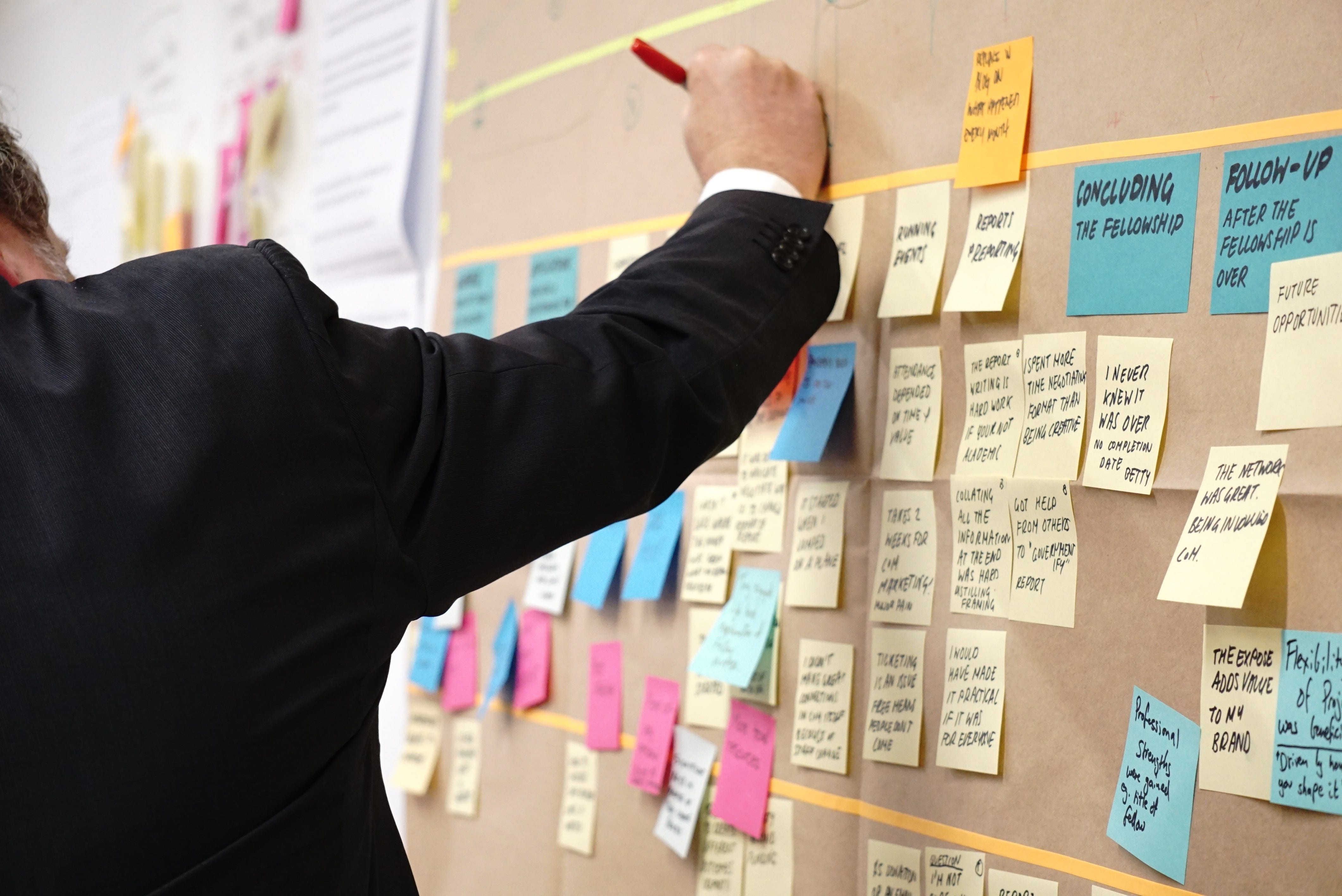
Photo by Jo Szczepanska on Unsplash
Now your manager gets excited about the potential of AI and asks you to come up with AI Project ideas. But how do you generate AI Project ideas? Who do you need to talk to? And how do you create a successful AI Project ideas pipeline?
This post introduces you to a framework of coming up with AI Project ideas. It focuses on the foundation of thinking about AI Projects, the project-generation framework, and the team to find AI Projects. The content is based on input from global experts landing.ai, Alexander Thamm GmbH, In The Pocket, and my personal experience.
Understanding Business & AI
Before starting any project ideation work, you first need a solid foundation. You will only be in a position to find AI Projects if you understand your company’s and AI’s capabilities. Understanding a business can be challenging for external consultants, as they need to figure out the quirks of a company rapidly. Yet it’s continuously important for experienced employees.
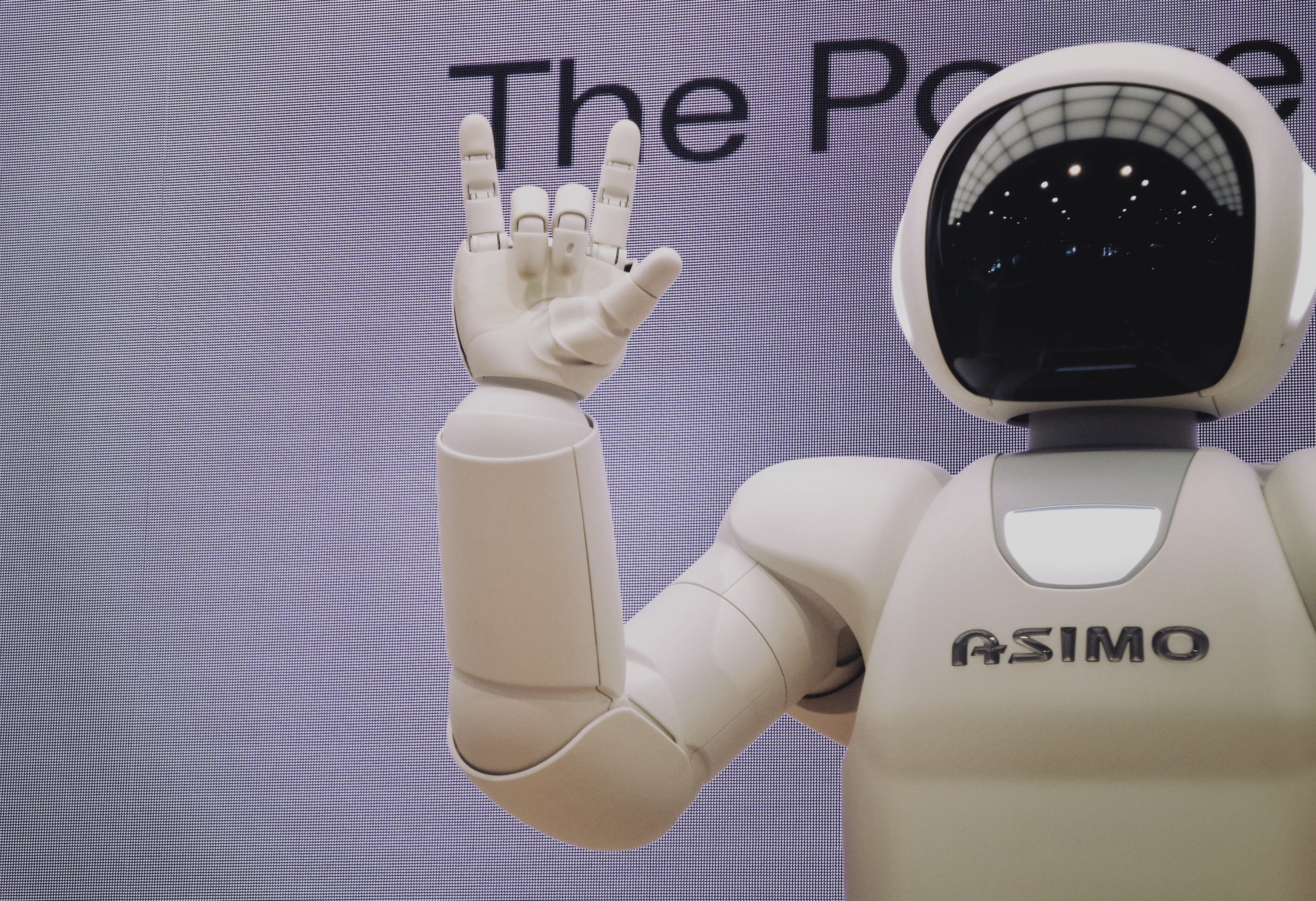
AI generally excels at three things: creating new products, improving existing products, and automating tasks. While the first two categories promise new revenue, the last category aims to reduce costs. As you’ve learned in Business Basics for Data Scientists, focus on increasing revenue before decreasing costs is sound advice.
AI applications are used when challenges cannot be solved by employing traditional software development. That is usually the case when the underlying patterns are not obvious. — Dr. Patrick Glauner, Head of Data Academy, Alexander Thamm GmbH
AI applications are used when challenges cannot be solved by employing traditional software development. That is usually the case when the underlying patterns are not obvious. — Dr. Patrick Glauner, Head of Data Academy, Alexander Thamm GmbH
When looking for AI Project ideas to drive revenue, you can either try to generate new AI-based products or improve existing products with AI. To find AI Projects for new products, understand the business that you’re in. What pain points do your customers have? To identify how to improve existing products with AI, you need to thoroughly understand the existing products. Product managers can help you understand existing opportunities and challenges and put you in a position to look for AI Project ideas.
There are opportunities all over your company. Every department should have an answer to the question: “which of your daily tasks could be enhanced by Computer Vision or NLP?” —Kenny Helsens, AI Lead, In The Pocket
There are opportunities all over your company. Every department should have an answer to the question: “which of your daily tasks could be enhanced by Computer Vision or NLP?” —Kenny Helsens, AI Lead, In The Pocket
When looking to decrease costs with AI, a focus on automating tasks is paramount. To automate tasks, you need to understand internal processes and regulations. Meet with employees of business support functions like Finance, HR, or IT to map out highly repetitive tasks. These tasks are prime targets for automation.
AI is automation on steroids. A rich source of ideas for AI projects will lie in automating tasks that humans are doing today. Try to identify the specific tasks that people are doing, and examine if any can be automated. — Dr. Andrew Ng, CEO landing.ai, in How to Choose Your First AI Project
AI is automation on steroids. A rich source of ideas for AI projects will lie in automating tasks that humans are doing today. Try to identify the specific tasks that people are doing, and examine if any can be automated. — Dr. Andrew Ng, CEO landing.ai, in How to Choose Your First AI Project

The AI Discovery Diamond Framework
The proposed method in this article is the AI Discovery Diamond Framework. This framework gives you a structured approach to come up with AI project ideas.

The AI Discovery Diamond Framework consists of two iterations. First, you come up with as many AI Project ideas as possible. Second, you narrow the list down to the most promising ones. Let’s look at each iteration in detail.
Discover — Generate a pool of AI Project ideas
The first iteration step of the AI Discovery Diamond explores the vast solution space in front of you. The underlying assumption is that valuable AI Project ideas can come in any form and situation and that no idea is too silly to be considered. There are different methods to come up with wild AI ideas.
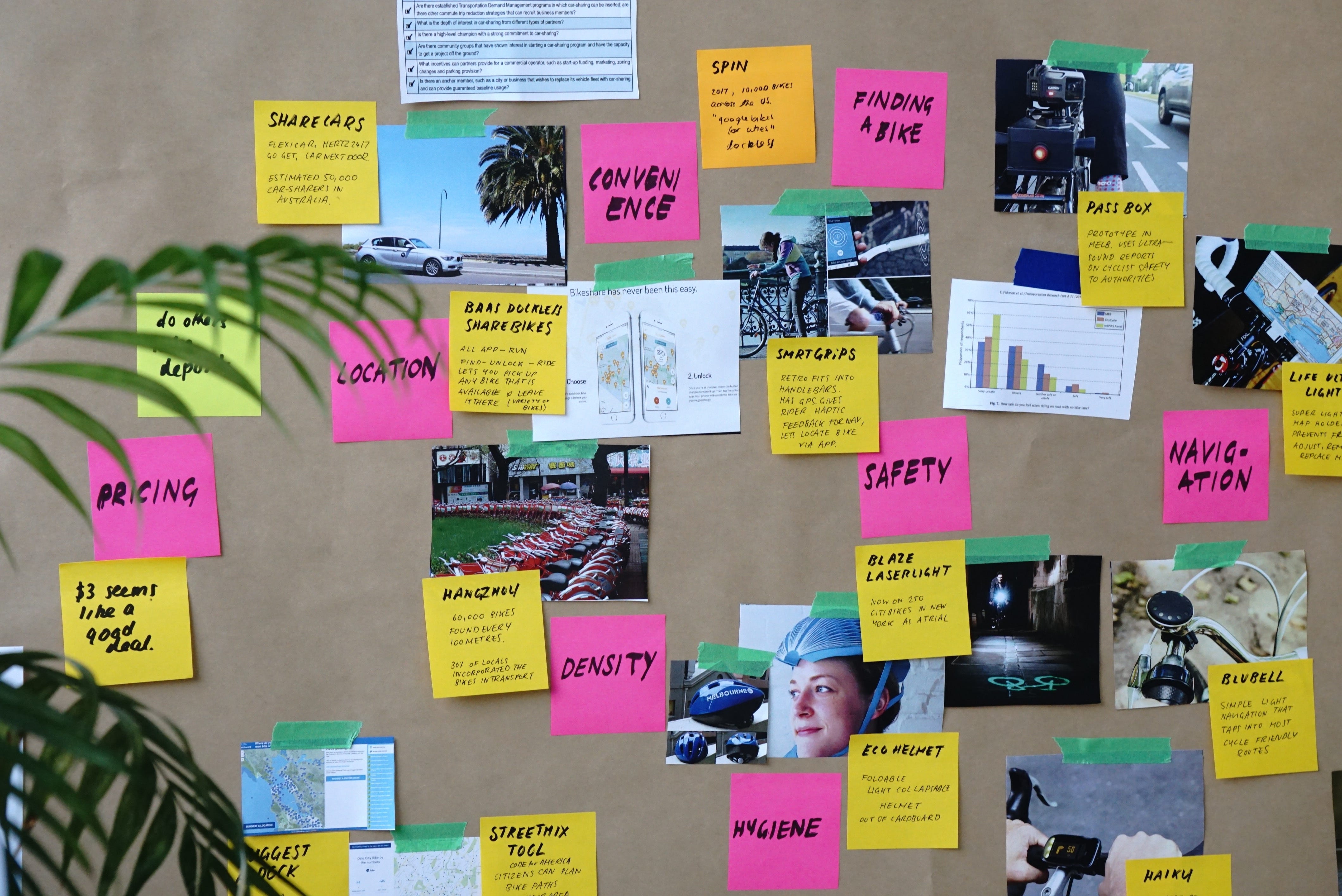
Photo by Jo Szczepanska on Unsplash
For instance, the Belgium-based digital product studio In The Pocket has created the AI The Game to help you come up with AI Project ideas. It uses references of AI Project ideas, e.g. face recognition to unlock a smartphone or automatically classifying emails, to start the ideation process. Participants use these reference projects as stimuli to convert them to their own ideas.
AI The Game is a card game that can be played with a small group of people. Ideally, you play 2 rounds with 10 people for an hour in which you come up with 20 ideas. Many ideas are not always great, and that’s ok. If after an hour the group came up with 2 or 3 fresh, valuable concepts, it was always worth the time. — Kenny Helsens
AI The Game is a card game that can be played with a small group of people. Ideally, you play 2 rounds with 10 people for an hour in which you come up with 20 ideas. Many ideas are not always great, and that’s ok. If after an hour the group came up with 2 or 3 fresh, valuable concepts, it was always worth the time. — Kenny Helsens
Even if you don’t play AI The Game, brainstorming with the right group of people will get you far. Ideas for brainstorming methods can be Round-Robin, Quiet Writing, or other agile methodologies for idea generation. It helps to have a knowledgeable moderator to guide the brainstorming session.
Yet, the sole quantity of AI Project ideas is not everything. You might have many AI Project ideas by now, but how do you focus on the most promising ones?
Define — Narrowing down the most promising AI Project ideas
Once you’ve gathered many ideas, it’s time to rank these ideas. In The Beauty of Holy Grail AI Projects, you’ve read that risk and impact are the most crucial factors for evaluating AI ideas. An important tool in evaluating the feasibility of AI Project ideas is the AI Project Canvas.
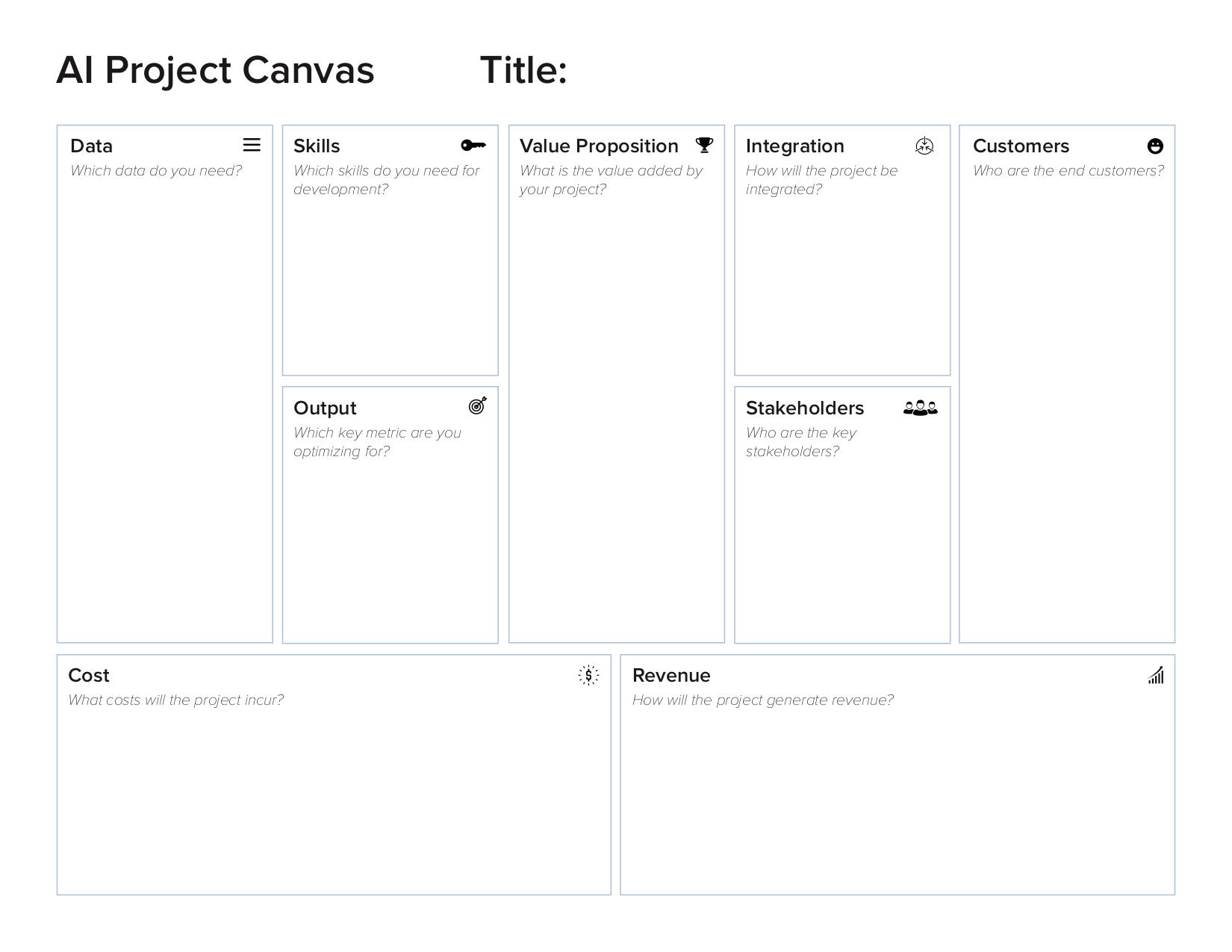
The AI Project Canvas helps you ask the right questions about your project. The more blocks you convincingly answer about the project, the higher is its feasibility. After you’ve formulated the AI Project Canvas for every AI Project idea, you can handily rank the projects and focus on the most promising ones. In The Pocket designed their AI Value Canvas for this purpose as well.

Photo by Jeff Sheldon on Unsplash
Now that you know how to approach finding AI Project ideas, let’s find out which key players you should recruit to come up with great AI Project ideas.
The Team to come up with great AI Project Ideas
You need a dream team of experts to come up with promising AI Project ideas. The team members should be experts in the following three categories: business, customer, and data. Let’s go through each of the categories.
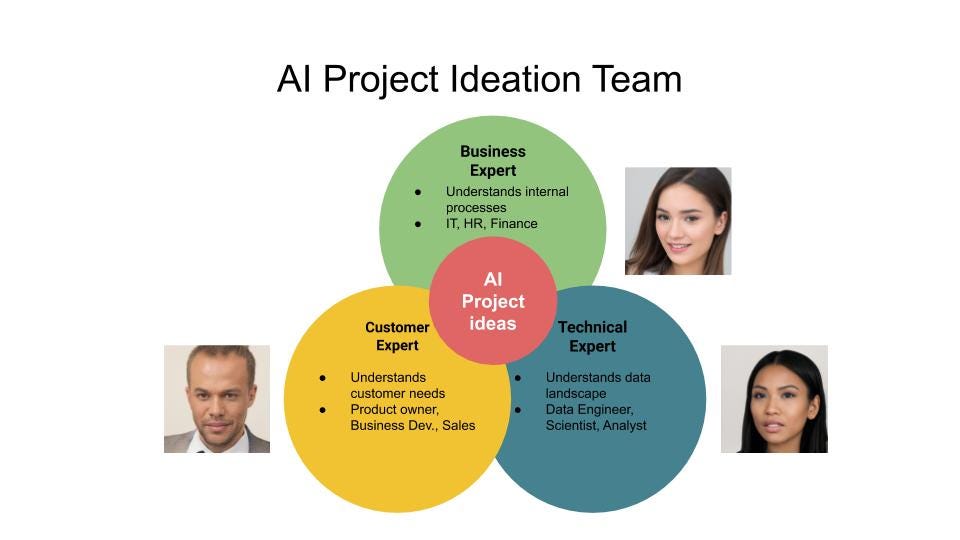
The first category consists of business experts. These colleagues know the company and its processes well. They ideally have a good overview of existing processes and with the right nudge towards AI, can come up with ideas on how to automate processes. Colleagues from IT, Finance, or HR are helpful additions to the team.

Photo by Jo Szczepanska on Unsplash
The second category consists of colleagues who truly embrace the customer perspective. The colleagues know about customer pain points and needs. Their knowledge will be invaluable in coming up with AI-laden product ideas. Product Owners, Project Managers, Business Developers, and Sales colleagues fit this profile well.
On the customer side, you need technical experts, decision-makers who know what has already been tried out in the past, and innovation managers. Business analysts, data scientists, and data strategists are possible external project partners. — Dr. Patrick Glauner
On the customer side, you need technical experts, decision-makers who know what has already been tried out in the past, and innovation managers. Business analysts, data scientists, and data strategists are possible external project partners. — Dr. Patrick Glauner
The third category consists of technical data experts, the dataists. They understand the technical landscape and can help answer technical questions. Dataists also understand cutting-edge technology developments and can focus on applying research breakthroughs to new AI Project ideas. Data Engineers, Scientists, and Analysts are category three workshop participants. Ideally, the dataists have their home base in a centralized AI team, according to Andrew Ng.
In the AI era, a key moment for many companies will be the formation of a centralized AI team. This AI team could sit under the CTO, CIO, or CDO. It could also be led by a dedicated CAIO (Chief AI Officer). — Andrew Ng, AI Transformation Playbook
In the AI era, a key moment for many companies will be the formation of a centralized AI team. This AI team could sit under the CTO, CIO, or CDO. It could also be led by a dedicated CAIO (Chief AI Officer). — Andrew Ng, AI Transformation Playbook
From the soft skill perspective, look for participants who are creative and interested in AI. When you set the stage for the workshops, make sure to embrace an atmosphere of safety and trust. All ideas are valid in the Discovery phase and you want to harness wild ideas. During the Define phase, switch to a more rational and conservative mindset when estimating AI Project potential, especially when you’re still in the early stages of your AI Maturity Journey.
Key Takeaways
In this post, you learned how to streamline the process of finding suitable AI Project ideas. After understanding the business you’re in and AI’s capabilities, the AI Discovery Diamond helps you go from ideation to evaluation. Mix in the right team, and you will come up with brilliant AI Project ideas.
- Understand the business and AI potential first
- Use the AI Discovery Diamond Framework to find new AI Project ideas
- Gather the right team of business, customer, and technical experts to ideate new AI Projects
Now it’s your time to apply your theoretical knowledge from this post to real-life. We appreciate any feedback you might have!




